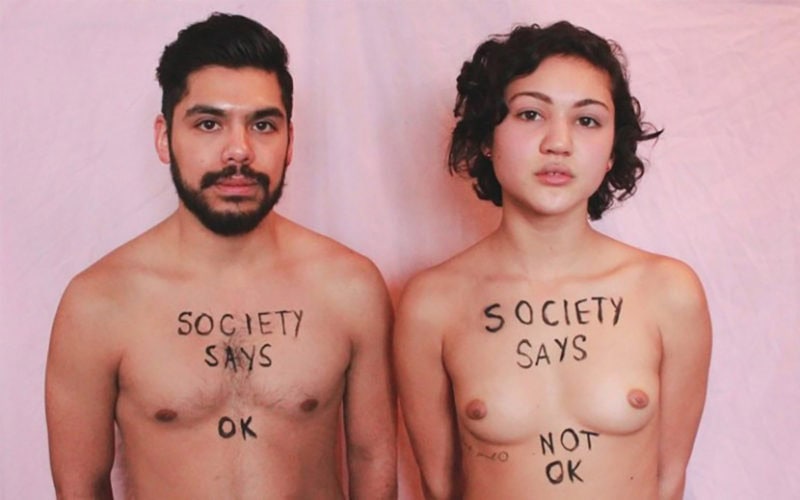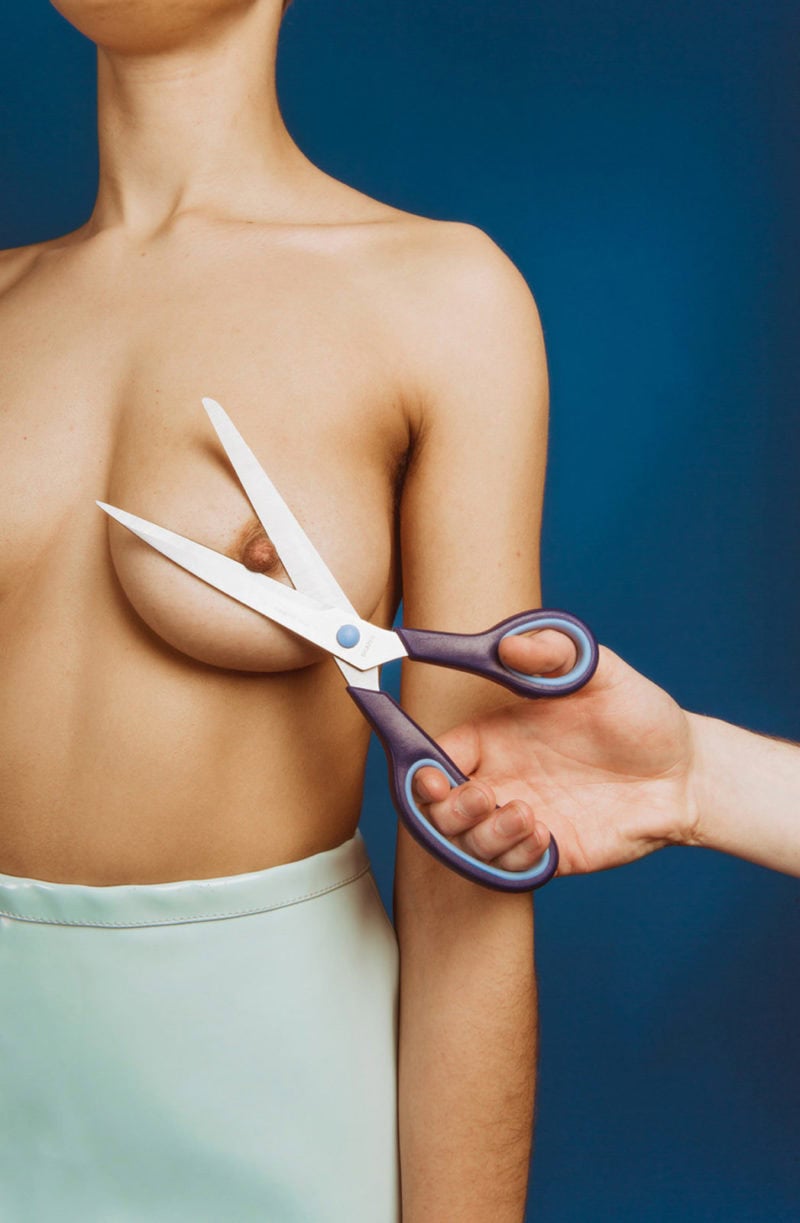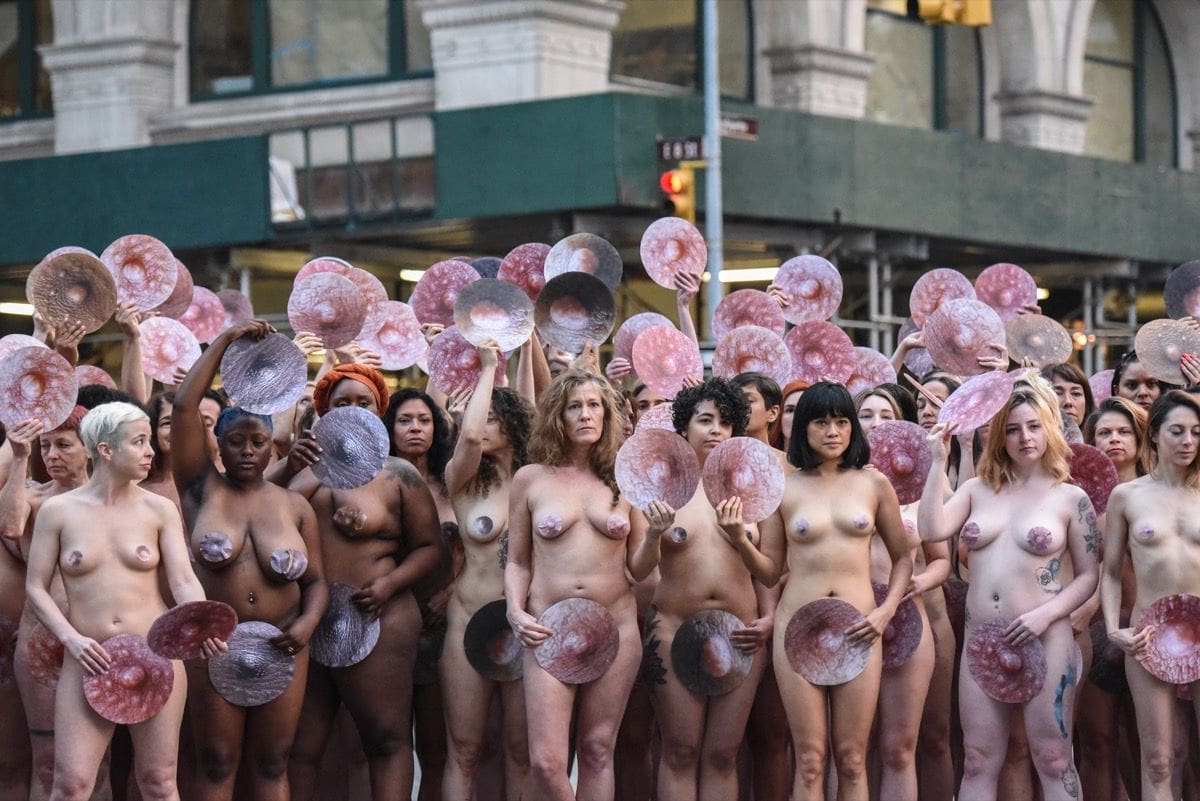The advent of Instagram and Facebook opened up a potentially whole new world to emerging artists, just to immediately set restrictions and tell them what kind of art was appropriate to be shared and what was not. The social media censorship pointed towards bodies – especially female bodies. It takes a quick check at those social media guidelines to understand that there is something wrong:
“ (…) for a variety of reasons, we don’t allow nudity on Instagram. It also includes some photos of female nipples (…) Nudity in photos of paintings and sculptures is OK.”
“ (…) we restrict some images of female breasts that include the nipple on Facebook (…) we allow other images, including those depicting women actively engaged in breastfeeding.”

The human body has always been a pivotal subject of art. Men have felt the need to trace the outlines of their figures on a surface since the Stone Age with cave drawings. Over the centuries, it developed to sculpture and painting, to photography and video. Yet it seems that in the modern and progressive 21st Century, the anatomy of the female breast has to be censored and cannot be represented on the internet. So, it sounds like women can be seen using their breasts to feed their children but are not allowed to just be wearing their breasts without their image being sexualized or exploited.
The platforms have been banning photographic representations of the nude body, and this practice has been interfering with artists’ ability to share their works and to interact with their audience. However, over the past years, social media have started to play a central role in protest communication and mobilization. The leading #freethenipple movement arose back in 2013 from the mind of actress Lina Esco. It spread virally over the internet and ended up being advocated by many celebrities from all over the world; Miley Cyrus, Cara Delevigne, Lena Dunham, Rihanna to name a few. Many feminist men took part in the campaign as well, posting creative pictures of themselves wearing printed female nipples and taping them over theirs. It turns out that there are absolutely no differences between male and female nipples. Mind-blowing. Campaigners have been arrested on many occasions but, luckily, the fight against censorship has increased over the years. It has become a creative and meaningful outlet for artists who keep challenging these ridiculous guidelines on a daily basis. In more recent years, singer Janelle Monàe debuted the music video for “PYNK”, making a political statement through a pastel-colour palette of innuendos to the female anatomy. Photographer Steph Wilson asks through her vibrant and playful portraits whether social media censorship has gone too far. Instagram account @genderless_nipples presents closeup photos of nipples: by looking at them it is impossible to state who they belong to. Matt Lambert shot the film “Nipples”, questioning sexuality, gender and the double-standard of digital censorship.

Last weekend on June 2, 2019, artist-photographer Spencer Tunick created one of his nude installation in front of the headquarters of Facebook and Instagram in New York City. Tunick’s name certainly stands out in the fight against internet artistic nudity censorship. During his career, he has staged more than 75 large-scale installations with hundreds, maybe thousands of nude women and men in both urban and natural settings across the globe. He usually documents the process and shares the final products on his Instagram. But in order to do that, he has to censor himself by meticulously blurring every body part that might be inappropriate for the algorithm. As he explained, the work he is allowed to post is fundamentally different from the work he makes. On Sunday, Tunick gathered 125 people – men and women – over Astor Place. They laid on the ground under his direction. Women wore stickers of male nipples provided by TV host Andy Cohen, artist Andres Serrano, actor-photographer Adam Goldberg, Red Hot Chili Peppers drummer Chad Smith and artist Paul Mpagi Sepuya. The performance is in collaboration with the National Coalition Against Censorship (NCAC) and is part of the #wethenipple campaign.
Tunick’s work never ceases to ring a bell on the urge for the media to reconsider their conditions and adopt an art-friendly policy.
Social media have become a fundamental mean of communication in our society, the first choice when it comes to broadcasting information, making political statements or promoting personal projects. But – as someone once said – with great power comes great responsibilities and it is about time for Facebook, Instagram and all the others to legitimize the human body in every form and end the sexual discrimination. In 2019, artists should be allowed to rely on Instagram and Facebook for their careers, since these media have become the biggest stage to showcase works and reach audiences globally. And it is thanks to artist-activists like the people mentioned before that we are reminded of the importance of art and its ability to communicate in a powerful and universal way.
https://www.instagram.com/p/ByNIAlNh-pF/
